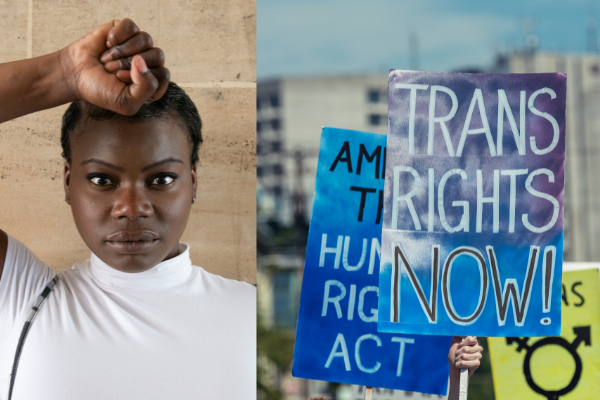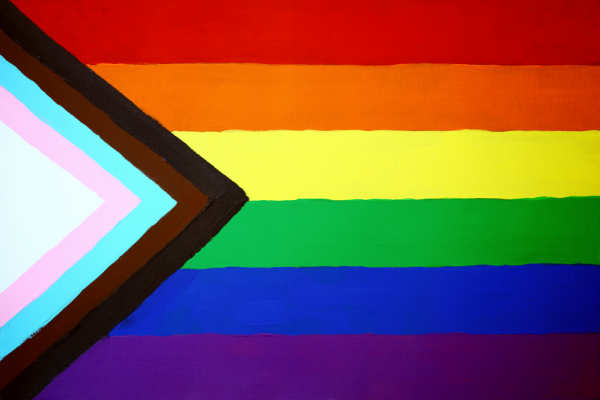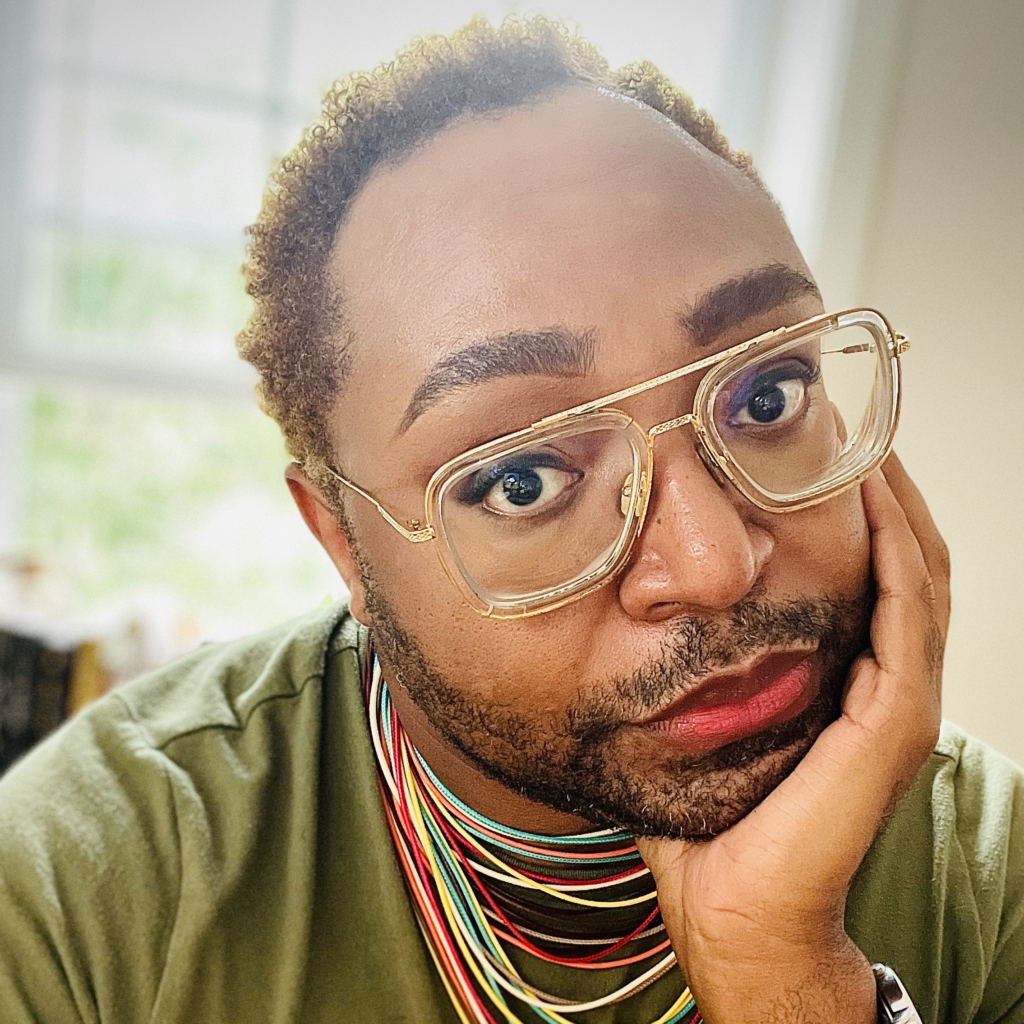By: Lamont Bryant
Highlights:
- June is Pride month, and as we celebrate our LGBTQ+IA2+ communities, we should also recognize that this current moment is a turning point from a policy perspective.
- We need to support LGBTQ+ youth socially and recognize the intersection of youths’ race, sexuality, and gender identity.
- In this blog, read more about what you can do next to support LGBTQ+ youth.

Happy Pride!
Watching gravity-defying drag-queens perform acrobats in 6 ½ inch stilettos or stunning ballroom legends voguing as they battle on the dancefloor are some of my favorite moments during Pride. However, every year I spot a group of LGBTQ+ youth sporting their colorful Pride flags like superhero caps, which stirs unfadable joy and the flutter of hope. They are superheroes for daring to live and be their most authentic selves in their own right.
The fact of the matter is, LGBTQ+ youth don’t need another hero, but they need the support to thrive. Their presence is an essential reminder that Pride is not a parade, but a brave protest to proclaim equity and freedom from the normative limits of gender and sexuality at the intersection of infinite social identities. Every year we celebrate Pride during the month of June as an important reminder of resistance against the oppression of lesbian, gay, bisexual, transgender, queer, intersex, asexual, two-spirit, and other sexual diverse and gender minoritized individuals (LGBTQ+IA2+).
Turning Point
This year, over 250 anti-LGBTQ+ state legislative bills will loom over Pride. More importantly, is the fact that this historic surge of anti-LGBTQ+ bills is made up of 200 anti-LGBTQ+ bills that adversely affect LGBTQ+ youth. While a quarter of these bills aim to criminalize lifesaving medical care for transgender youth, approximately 75% of the anti-LGBTQ+ bills enable the discrimination against LGBTQ+ youth in schools, particularly transgender youth. [1]
We stand at a curious junction. The introduction of anti-LGBTQ+ school policies threatens decades of youth advocacy and work within the educational system to increase greater protections for LGBTQ+ youth. As such, schools with LGBTQ+ affirming policies have become a refuge of acceptance and empowerment for many LGBTQ+ youth who may face rejection at home or within their community. By and large, most LGBTQ+ youth identify schools as LGBTQ+ affirming (55%) and gender-affirming (51%) spaces in stark comparison to affirming homes (37% and 32%, respectively). [2]
The Importance of Social Support for LGBTQ+ Youth
By addressing the systemic oppression of LGBTQ+ youth, schools can become grounds for fostering social support networks and relationships. Research has found that creating affirming environments through Gender and Sexuality Alliance (GSA) school groups and LGBTQ+-focused school policies impede peer bullying and foster higher levels of support from classmates and teachers. [3]
The association of LGBTQ+ affirming schools with lower rates of attempted suicide is important to preserve, given that 45% of LGBTQ+ considered suicide within the past year.
While student organizations like GSA’s do not guarantee psychological wellbeing, efforts to support and affirm LGBTQ+ youth are interrelated to feeling connected to their school.
Many of the anti-LGBTQ+ efforts in schools will threaten the viable connection LGBTQ+ youth have with their schools. Anti-LGBTQ+ school policies isolate youth by prohibiting transgender youth from competing in student athletics, limiting age-appropriate discussion of sexual orientation and gender identity, and denying youth access to school facilities that align with their gender identity. Furthermore, many of the anti-LGBTQ+ youth initiatives also include language that will criminalize the discussion of racism within schools. However, discourse around LGBTQ+ youth and school and social support often neglects meaningful discussion at the intersection of race.
The Importance LGBTQ+ Youth at Their Intersections
Let me spill some real tea that may be obvious to many Black folx in the LGBTQ+ community; It is simply impossible to discuss any LGBTQ+ issue without addressing race. Period. However, the discussion of Black LGBTQ+ youth and young adults often occurs within the context of sexual-transmitted infections, HIV, and PrEP adherence. It is important that we continue to discuss how systemic barriers to health that target sexual and gender minoritized youth disproportionately affect Black LGBTQ+ youth and youth adults. However, I cannot help but wonder how the historical hyper-sexualization of the Black body may exclude Black LGBTQ+ youth and young adults from conversations about social well-being, connectivity, and other forms of positive interpersonal engagement.

Black LGBTQ+ youth face discrimination at the intersection of their race, sexuality, and gender identity both at school and at home. I find the complexity of Black LGBTQ+ social support interesting because seeking support from both inside and outside their families can be both beneficial and potentially harmful. For instance, there is a link between LGBTQ+ affirming schools and reduced attempted suicide [4]; however, Black LGBTQ+ students attending majority Black schools were least likely to have a gender and sexuality alliance support group. [5]
In conjunction, Black young adults place great importance in connecting with their family compared to other racial groups; however, Black LGBTQ+ youth continued to experience greater rejection from their family and Black peers. [6] However, dialogue about the social support from their family of origin and close friends (i.e., chosen family, fictive kin) often assumes that these support systems operate independently.
As systemic changes propose a threat to make schools less affirming spaces, it will be increasingly important to understand how to aid Black families in their efforts to support their Black LGBTQ+ youth. My current research seeks to understand the role of Black LGBTQ+ young adults’ social support networks play as they navigate oppression that targets their racialized sexual and gender identity. Furthermore, I hope to shed more light on the interconnectedness of Black LGBTQ+ young adults’ social support network.
What Can We Do Now?
- For most LGBTQ+ youth, the best way for parents and caregivers to demonstrate their support is by accepting and welcoming their LGBTQ+ friends or partner(s).
- When LGBTQ+ youth choose a name that better reflects their gender identity, avoid “deadnaming” (the name given at birth).
- Pronouns are essential tools that validate LGBTQ+ youth and young adults’ gender identity. When in doubt, use their name and ask about their pronouns.
- We all make mistakes. If you misgender a person, it is important to acknowledge your error and apologize without making it about you.
- LGBTQ+ youth of color may be more reluctant to report harm or harassment, so be proactive by offering your support while also bolstering their autonomy.
- Listen, reflect, and talk respectfully with LGBTQ+ youth about their identity. Supporting LGBTQ+ youth may mean finding help and resources to process your personal feelings, expectations you developed as a parent, prejudices (we all have them), and identifying areas of growth with other adults.
- Keep learning! The GLSEN national network provides resources for students and educators, including research and educational webinars. Also, the LGBT Family Acceptance Project is a great resource for research, training and readings.
- Race and ethnicity are important to understanding sexual and gender identity. The National Black Justice Coalition provides great resources including a terminology workbook, a gender justice toolkit, and culturally informed dialogue and reports.
- The Trevor Project LGBTQ+ young people can access free confidential crisis counseling via chat, phone, and text through The Trevor Project.
References
[2] Trevor Project: 2022 National Survey on LGBTQ Youth Mental Health.
[3] Day, J. K., Fish, J. N., Grossman, A. H., & Russell, S. T. (2020). Gay‐straight alliances, inclusive policy, and school climate: LGBTQ+ youths’ experiences of social support and bullying. Journal of Research on Adolescence, 30, 418-430.
[4] Trevor Project: 2022 National Survey on LGBTQ Youth Mental Health.
[5] Truong, N. L., Zongrone, A. D., & Kosciw, J. G. (2020). Erasure and resilience: The experiences of LGBTQ students of color, Black LGBTQ youth in U.S. schools. New York: GLSEN.
[6] Hailey, J., Burton, W., & Arscott, J. (2020). We are family: Chosen and created families as a protective factor against racialized trauma and anti-LGBTQ oppression among African American sexual and gender minority youth. Journal of GLBT Family Studies, 16(2), 176-191.
If you have any comments or questions about this post, please email Youth-Nex@virginia.edu. Please visit the Youth-Nex Homepage for up to date information about the work happening at the center.

Author Bio: Lamont Bryant (they/them) is a community psychology doctoral student at the University of Virginia. Inspired by Black feminist and queer/quare theory, Lamont seeks to understand the development of psychosocial-informed protective practices. Specifically, their research examines Black women, and sexual and gender minorities’ formation and utility of social support, both in-person and online. Lamont is a first-generation student and the recipient of the Graduate School of Arts and Sciences’ Department Diversity Recruitment Award and the Dean’s Doctoral Fellowship. Before attending UVA, they lectured for several years at the University of Baltimore and Towson University’s Department of Gender and Women’s Studies. At the University of Maryland’s School of Medicine, they coordinated specialty health educational assistance and professional development for youth and LGBTQ-serving organizations and providers. Additionally, Lamont mentored a team of Black LGBTQ+ young adults through an empowerment framework and utilized community-based participatory research methodologies and systematic tools to gather community input for targeted interventions created for and with LGBTQ+ youth of color.
